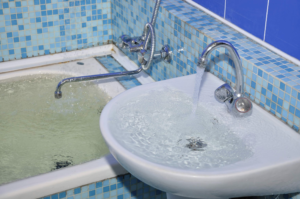Serving Charlotte, Monroe, Concord &
All Of Mecklenburg County
Menu
Has this nightmare ever happened to you? You come home from a family trip late at night and walk into your home only to be shocked that somehow, it’s been flooded. Regardless of where the flooding occurred or how much damage it caused, your initial reaction is probably to crack open the linen closet and put all of your old towels to good use. However, many homeowners prematurely jump into the cleanup process without stopping to assess the dangers associated with flooding. Not all floodwater is created equal. In fact, some floodwater can be detrimental to your health. Before engaging in full-blown restoration mode, we at Restoration 1 would like to encourage you to take a minute to figure out which type of floodwater has affected your Greater Charlotte home.

Easy. This is clean, fresh, safe water. It comes from faucets, toilets, and drinking fountains. When flooding from Category 1 occurs, the main task is to thoroughly dry the area. There’s not much risk of health problems or contamination. Although this water is clean, it doesn’t come without risks over time. If not cleaned up quickly, clean water can degrade into Category 2, leading to health issues and a longer flood restoration process.
If you’re apprehensive about touching the water, it’s likely in Category 2 or 3. Category 2 water contains chemical, physical, or biological contaminants. This includes urine-contaminated water, water from sump pump failures, and water discharge from dishwashers and washing machines. Because this water contains both microorganisms and micronutrients, it becomes increasingly contaminated and dangerous over time. Category 2 water damage is very common in homes because it typically comes from kitchen or bathroom appliance malfunctions.
Category 3 water damage is as harmful as it gets. It involves water that is grossly contaminated and contains pathogenic and toxigenic agents. This category of floodwater contains silt, organic matter, pesticides, heavy metals, regulated materials, or toxic organic substances. Examples of this include sewage backup, water from rivers or streams, or water from tropical storms. If you’re in contact with this type of floodwater, give yourself a free pass for laziness. Feeling a little braver than they should, many homeowners adopt a do-it-yourself approach and find themselves either sick or with a home that isn’t completely recovered from the water damage.
Do a quick Google search for “how to clean up after a flood” and you’ll find endless pages of tips and tricks. The online world is bursting with stories and formulas for apparent success in cleaning up after a flood. However, flooding affects a lot more than they eye can see. Old towels can only reverse the surface level damage that is visible to the eye. Further, floodwater requires professional-grade equipment. Restoration 1 of Greater Charlotte provides both quality equipment and a quality staff to remediate floodwater damage. Although the cleanup process can be strenuous and exhausting for you, we take steps to ensure your comfort and assurance throughout the entire process. So, let’s put away the ragged towels and call a professional floodwater cleanup company instead.